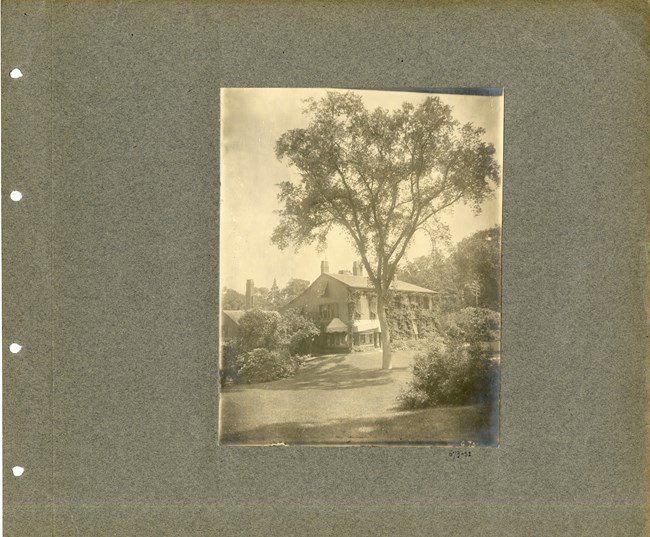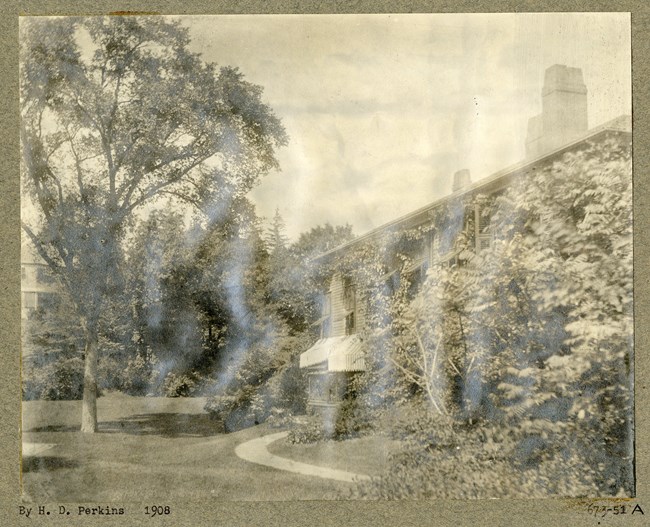Part of a series of articles titled Echoes of the Olmsted Elm: Works from the Rhode Island School of Design Witness Tree Project.
Article
Echoes of the Olmsted Elm Lauren Meier Essay

Olmsted Archives
Nearly a century after Olmsted settled on Warren Street, I took the plant materials course at Harvard Graduate School of Design from Joe Hudak, who at that time was still partner in Olmsted Associates and often referred to the Olmsted Homestead in his lectures about trees, shrubs, and vines. I had visited the site on many occasions in the 1980s and had greatly appreciated the magnificence of this stately tree, but in 1991 our worlds literally collided (the tree and me that is) when I came to the Olmsted NHS to direct the restoration of the grounds. Through the next decade, I grew to appreciate Olmsted’s careful decision to save this tree and I marveled at its perseverance through a century of change including the construction and deconstruction of a swimming pool. In the early days of the Olmsted Center for Landscape Preservation, Charlie Pepper led the program to propagate historically significant plant material, and the elm was a natural candidate to inaugurate that effort. It served as an important topic related to strategies for plant selection, retention, and replacement in historic landscape preservation so its contribution to the field has been note-worthy and the elm lives on in articles and the memories of the horticulturists who participated. My oldest child, born in the early days of the restoration planning, grew up running circles around the elm and climbing over the rock outcroppings at Fairsted. I like to think that these experiences shaped his appreciation of the natural and designed environment, clearly evident in many aspects of his young adult life including his critiques of college campus design.

Olmsted Archives
Lauren G. Meier
American Society of Landscape Architects
Friends of Fairsted
Last updated: April 8, 2022
